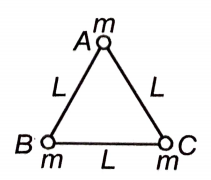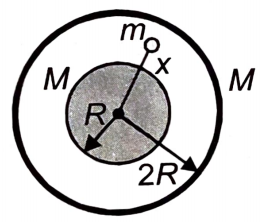According to Kepler, the planets move in:
1. the circular orbits around the sun with the sun at its center.
2. the elliptical orbits around the sun.
3. the straight lines with constant velocity.
4. the elliptical orbits around the sun with the sun at one of its foci.
The minimum and maximum distances of a planet revolving around the sun are \(r\) and \(R.\) If the minimum speed of the planet on its trajectory is \(v_0,\) its maximum speed will be:
| 1. | \(\dfrac{v_0R}{r}\) | 2. | \(\dfrac{v_0r}{R}\) |
| 3. | \(\dfrac{v_0R^2}{r^2}\) | 4. | \(\dfrac{v_0r^2}{R^2}\) |
The torque on a planet about the centre of the sun is:
1. zero.
2. negative.
3. positive.
4. dependent on the mass of the planet.
During the motion of a planet from perihelion to aphelion, the work done by the gravitational force of the sun on it is:
1. zero.
2. negative.
3. positive.
4. may be positive or negative.
The time period of a satellite in a circular orbit of radius R is T. The period of another satellite in a circular orbit of radius 4R is:
1. 4T
2.
3. 8T
4.
Gravitation is the phenomenon of interaction between:
1. Point masses only
2. Any arbitrarily shaped masses
3. Planets only
4. None of these
The Force of gravitation between two masses is found to be F in a vacuum. If both the masses are dipped in water at the same distance, then the new force will be:
1. >F
2. <F
3. F
4. Cannot say
Two-point masses m and 4m are separated by a distance d on a line. A third point mass m0 is to be placed at a point on the line such that the net gravitational force on it is equal to zero.

The distance of that point from the mass m is:
1.
2.
3.
4.
Three particles A, B and C, each of mass m are lying at the corners of an equilateral triangle of side L. If particle A is released keeping the particles B and C fixed, the magnitude of the instantaneous acceleration of A is:

1.
2.
3.
4.
A uniform sphere of mass M and radius R is surrounded by a concentric spherical shell of the same mass but radius 2R. A point mass m is kept at a distance x (>R) in the region bounded by the spheres as shown in the figure. The net gravitational force on that particle is:

1.
2.
3.
4. Zero






